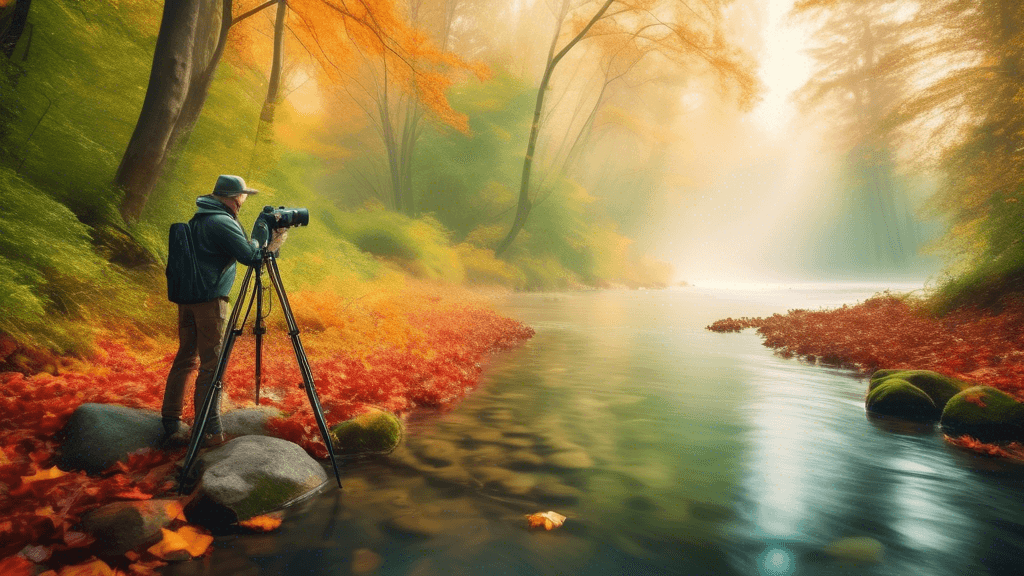
Capturing Movement: The Art of Photographing Rivers
Share
The Captivating Challenge of Photographing Rivers
For anyone with a passion for photography, aiming their lens at a river presents a unique set of challenges and opportunities. As an ever-moving canvas, rivers offer dynamic scenes that can convey the power and grace of natural flows. But how does one go about capturing this movement effectively, transforming a fleeting moment into a stunning photograph?
Understanding River Photography
Photographing rivers entails much more than simply clicking a button at a rushing stream; it's about capturing the essence of movement itself. This requires a keen understanding of both photography principles and the nature of moving water.
Key Techniques in River Photography
There are several techniques every photographer should master to capture rivers beautifully:
- Slow Shutter Speed: Using a slow shutter speed allows the camera to capture the movement of the river over time, creating a smooth, silky effect in the water. This technique works best with a tripod to avoid any unwanted camera shake.
- Fast Shutter Speed: To freeze the motion of crashing waves or splashing water, a fast shutter speed is essential. This captures the power and immediacy of the river's flow in vivid detail.
- Polarizing Filters: These reduce the glare from the water's surface, enhancing colors and increasing contrast in your photos. They also help in seeing beneath the surface of the water if that’s part of your desired composition.
- Optimal Lighting: Overcast days can often provide the best lighting for photographing rivers by reducing harsh shadows and highlights, resulting in more evenly lit images.
Composing the Perfect River Shot
Composition is as crucial as technical proficiency. Here are some tips for composing a balanced and engaging river photograph:
- Rule of Thirds: Placing key elements of your river scene along these lines or their intersections can create a more harmonious composition.
- Leading Lines: Use the river’s natural flow as a leading line, drawing the viewer’s eye through the frame and conveying a sense of depth and perspective.
- Inclusion of Foreground Elements: Adding elements like stones, leaves, or branches in the foreground can provide scale and depth, enhancing the sense of space in your photograph.
Mastering the Art of River Photography
Katy Locke, an esteemed landscape photographer, elaborates on the nuances of river photography, Each river tells its own story. The key is to spend time understanding its routes and rhythms before trying to capture it. Patience not only yields the best light and conditions but also infuses a sense of the river’s character in your photos.
Indeed, capturing the movement of a river is akin to narrating an untold story. It's about more than just settings and techniques; it's about seeing and conveying the soul of the landscape. By applying technical skills with an artistic touch, you can transcend ordinary snapshots to create true art.
Incorporating the Environment
Photographing rivers can also play a critical role in environmental conservation. Photographs can highlight the beauty of these ecosystems and the pressing need to protect them. A compelling image can become a powerful tool for change, raising awareness about pollution, water resource management, or conservation efforts.
Conclusion
River photography is a striking blend of art and technique, an engaging pursuit that challenges both your creative vision and technical prowess. Whether you're a seasoned photographer or a passionate beginner, the riverscape provides an impressive platform for developing and showcasing your skills.
Remember, the best river photograph not only shows the river but also tells its story. This calls for a combination of patience, practice, and passion. Get out there with your camera, experiment with new angles and techniques, and most importantly, connect with the environment around you.
Are you ready to capture the movement and mood of the river? Pack your gear, step into nature, and let the rivers be your muse!





